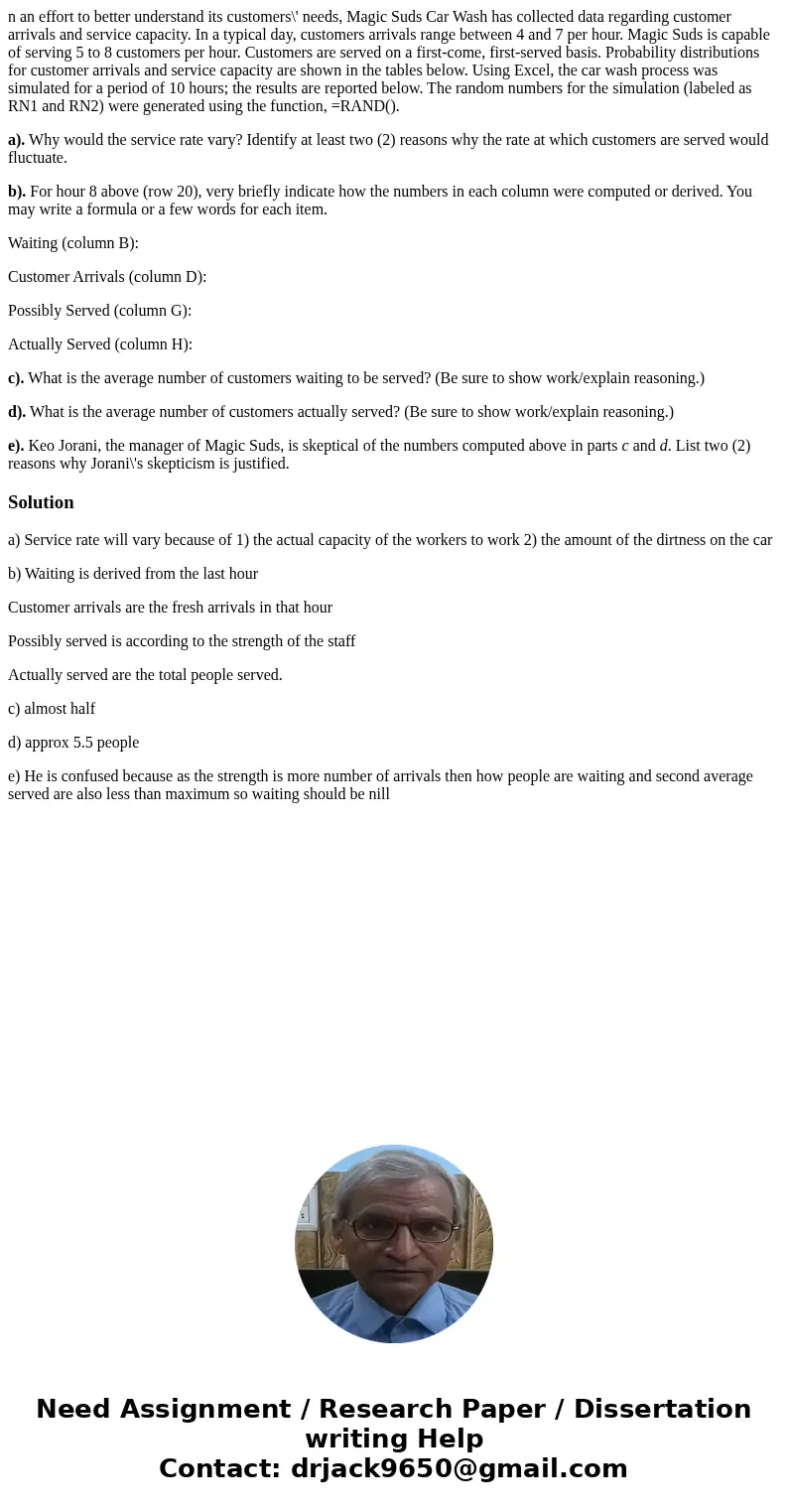n an effort to better understand its customers needs Magic S
n an effort to better understand its customers\' needs, Magic Suds Car Wash has collected data regarding customer arrivals and service capacity. In a typical day, customers arrivals range between 4 and 7 per hour. Magic Suds is capable of serving 5 to 8 customers per hour. Customers are served on a first-come, first-served basis. Probability distributions for customer arrivals and service capacity are shown in the tables below. Using Excel, the car wash process was simulated for a period of 10 hours; the results are reported below. The random numbers for the simulation (labeled as RN1 and RN2) were generated using the function, =RAND().
a). Why would the service rate vary? Identify at least two (2) reasons why the rate at which customers are served would fluctuate.
b). For hour 8 above (row 20), very briefly indicate how the numbers in each column were computed or derived. You may write a formula or a few words for each item.
Waiting (column B):
Customer Arrivals (column D):
Possibly Served (column G):
Actually Served (column H):
c). What is the average number of customers waiting to be served? (Be sure to show work/explain reasoning.)
d). What is the average number of customers actually served? (Be sure to show work/explain reasoning.)
e). Keo Jorani, the manager of Magic Suds, is skeptical of the numbers computed above in parts c and d. List two (2) reasons why Jorani\'s skepticism is justified.
Solution
a) Service rate will vary because of 1) the actual capacity of the workers to work 2) the amount of the dirtness on the car
b) Waiting is derived from the last hour
Customer arrivals are the fresh arrivals in that hour
Possibly served is according to the strength of the staff
Actually served are the total people served.
c) almost half
d) approx 5.5 people
e) He is confused because as the strength is more number of arrivals then how people are waiting and second average served are also less than maximum so waiting should be nill

 Homework Sourse
Homework Sourse